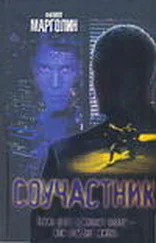“How could you figure out if Armstrong is faking?” Kellerman asked.
“Faking amnesia has been linked to increased brain activity in the prefrontal cortex of the brain, and increased pupil dilation.”
“Armstrong’s not going to submit to an MRI or CAT scan or whatever you’d use to see that stuff.”
“Symptom validity testing, or SVT, can also be used as a tool to assess whether people are faking when they claim to have no recollection of crimes they’ve committed.”
“How does that work?”
“SVT asks defendants to answer a number of questions about the details of the crime with which they’re charged. In answering each question, they must choose between two equally plausible answers, one of which is correct and one which is incorrect. If the defendant really has amnesia, the results should be random. In other words, correct and incorrect answers should be selected approximately equally. If the performance is significantly below chance—the incorrect answer is chosen significantly more than the correct answer—this indicates deliberate avoidance of the correct answer. That means the defendant most likely has an intact memory of the crime and is faking his amnesia.”
“So, we can trip up Armstrong if we can get him to take the test!” Kellerman said.
“Not necessarily. Armstrong is a lawyer, so he probably has above-average intelligence and good research skills. If he researched how to fake amnesia, he probably researched the methods you could use to prove he was faking. If he’s read the studies, he would understand the rationale behind SVT and how to game the test by giving random answers.”
“So, you’re saying that there’s no way we can figure out if he really has amnesia.”
“Not if he’s faking and has done his homework.”
Robin went back to her office after Doug Armstrong’s arraignment and called Carrie Anders. Anders was reluctant to discuss the Armstrong case, but she finally agreed to talk to Robin that evening at the Log Cabin, a tavern located on a country road, a half mile from the entrance to a state park, where they were not likely to run into anyone who would know them.
At five, Robin picked up some sushi and ate at her desk while working on a case she’d been neglecting. At eight, she turned out the lights. Thirty minutes after she left her office, Robin was sitting in a booth in the dimly lit interior of the Log Cabin.
The meeting was supposed to take place at eight thirty. Robin checked her watch. It was nine. By nine fifteen, Robin decided that Anders was going to be a no-show. She was getting ready to leave when the detective walked in. It was hard for a woman as big as Anders to be incognito, but she was trying her best by wearing jeans, a quilted ski jacket, and a baseball cap that was pulled low on her forehead. Anders stopped in the entrance to adjust her eyes to the dim light. The tavern was only a quarter full, and most of the patrons were regulars who lined the stools at the bar. Anders scanned the rest of the room. Moments later, she was sitting across from Robin.
“Thanks for coming,” Robin said.
“I bet you thought I wouldn’t show.”
“You didn’t seem crazy about talking to me.”
“I’m not.”
“Can I get you a beer as a thank-you?”
“I’m not going to be here long enough to drink it. And before I talk to you, I need you to agree that this meeting never happened?”
Robin nodded.
“Why did you think I’d agree to meet?” Anders asked.
“Doug told me how you and Roger treated him when you made the arrest. He also said you told him you wanted me to check into the DNA test the crime lab conducted. That struck me as a strange way to act if you were convinced Doug was a murderer.”
“I’m not.”
“Why?”
“Can we agree that Rex Kellerman is an unscrupulous asshole?”
“Definitely,” Robin said, using all her willpower to keep her facial muscles from forming a smile.
Anders leaned forward and lowered her voice. “No one but Kellerman thinks your client murdered his partner, and no one can figure out why he’s so intent on convicting Armstrong. The firm’s receptionist left Nylander and Armstrong alone in the office on the evening of the murder—so he could have done it—but no one we talked to can come up with a single reason why your client would kill the person everyone says was his best friend in the whole world. So, there’s opportunity but no motive. And then there’s the DNA.”
“What about it?”
“They scraped a minuscule amount of blood from under Nylander’s fingernails. The lab couldn’t analyze it, because the sample was too small, so Kellerman used a lab I’ve never heard of to analyze it. The report he read to the grand jury concluded it was Armstrong’s blood. But the lab didn’t use a conventional test. They used a test I’ve never heard of that depends on algorithms.”
“So, the DNA test might be flawed?”
“I don’t know anything about the science. Suppressing the results is your job. I just thought you should know that the state’s case is flaky.”
“Who do you have pegged for the killing?” Robin asked.
“There’s a good chance this was a burglary gone bad. If it wasn’t, Blaine Hastings is the obvious choice, but we have no evidence that puts him at the scene of Nylander’s murder.”
“So, there are no solid suspects?”
“No. And it’s time for me to go.”
“I can’t thank you enough for this, Carrie.”
“Yeah, well, I’ve always thought of Armstrong as a pretty solid guy. If he’s guilty, I misjudged him. But this just doesn’t sit right with me.”
Anders left and Robin waited fifteen minutes before going to her car. While she waited, she decided that if she was going to save Doug Armstrong, she had to find out everything she could about the test that had been used to conclude that his blood was under Frank Nylander’s nail.
* * *
Jeff was sitting on the couch, watching a football game, when Robin walked in. He smiled and used the remote to pause the game.
“Hi, kid,” he said. “What kept you so late?”
“Doug Armstrong’s case, and I need your help with something odd that’s popped up.”
Jeff patted the sofa. “What do you want me to do?” he asked when Robin was seated next to him.
“There’s plenty of evidence that Doug and Frank Nylander were alone in their law office around the time that the murder occurred, but Doug claims that he has amnesia for the evening of the murder and several days after, so he can’t tell me what happened that night.”
“Do you believe him?”
“I’m sure Rex Kellerman will claim he’s faking. Kellerman called me shortly after the arraignment and wanted Doug to take some tests he claimed would show if he really has amnesia.”
“What did you tell him?”
“What do you think?”
Jeff laughed. “I hope you were diplomatic.”
“My answer was completely in Latin.”
“Good for you. So. Do you think Armstrong is faking?”
“I don’t have the training to give an opinion, but he seems genuinely confused.”
“So what’s this thing you need help with?”
“Doug has injuries that could have come from a fight. One piece of evidence that suggests that the fight was with Nylander is a minute amount of blood that was found under Nylander’s fingernail. The blood sample is too small to be used in a conventional DNA test, so Kellerman submitted the sample to an independent lab that uses some kind of cutting-edge technology, and they concluded that the blood is Doug’s. I need you to find out what that lab did and brief me on how valid the test is. I want to know if I can knock out the DNA evidence pretrial by arguing that it’s not been deemed reliable in the relevant scientific community.”
Читать дальше












